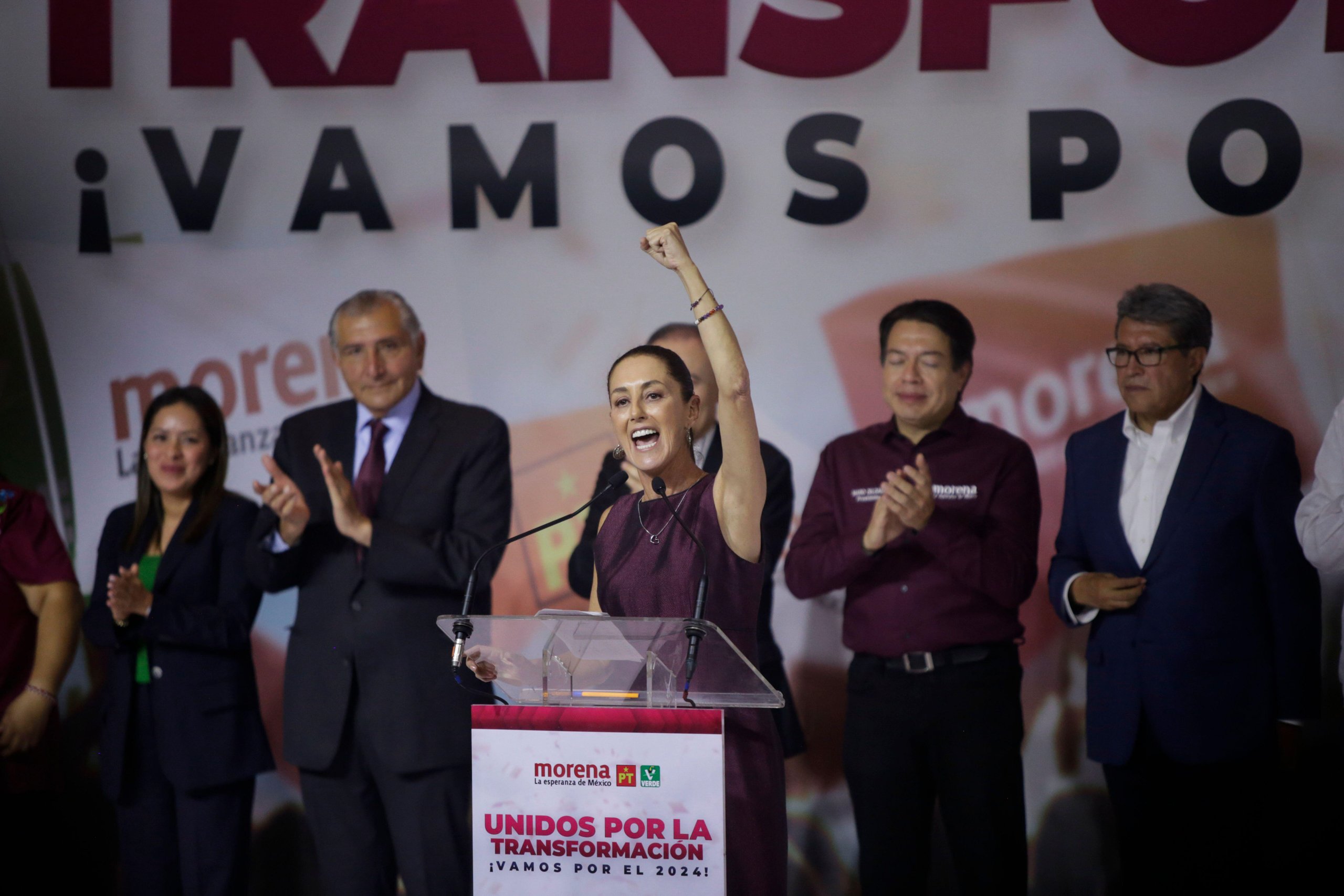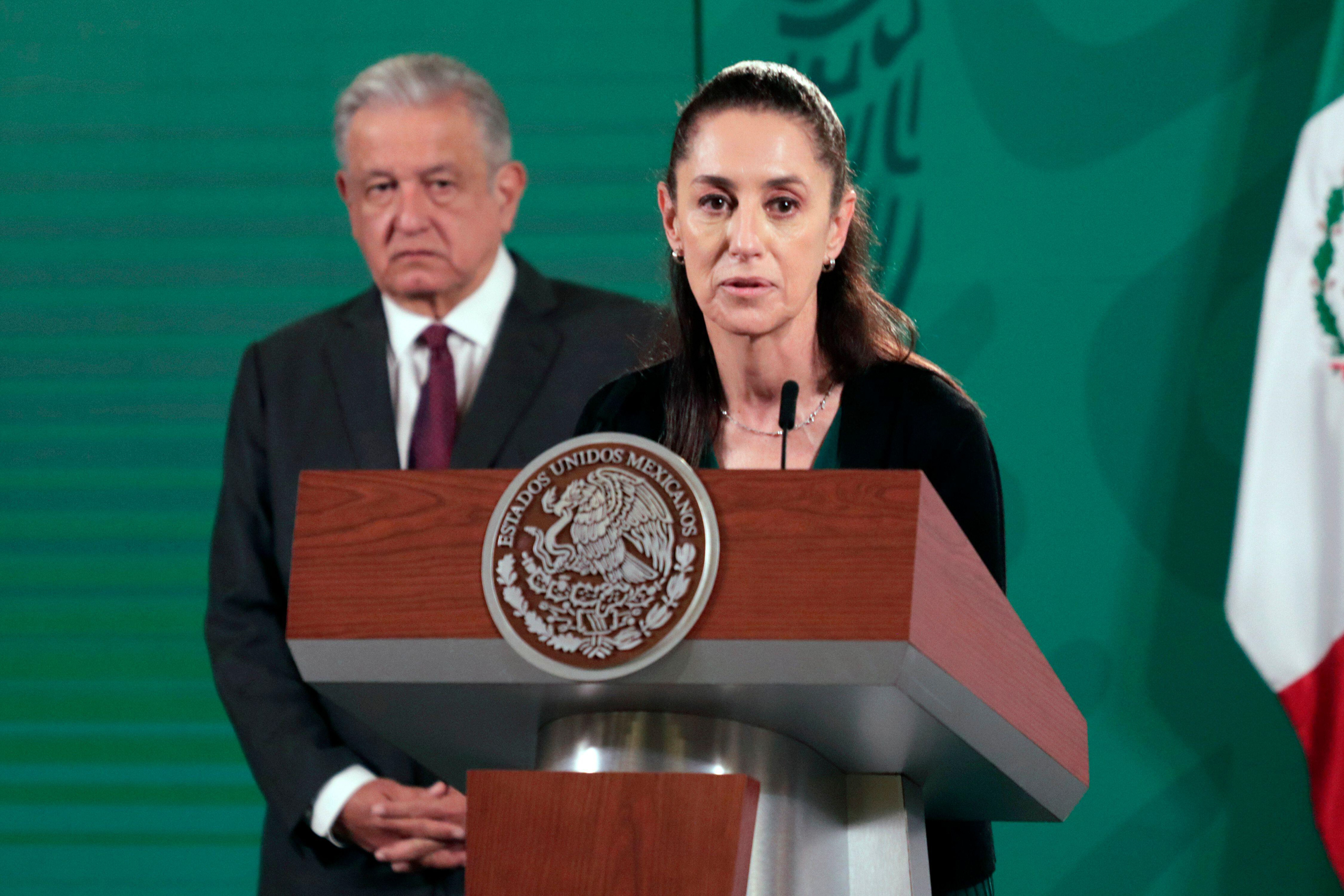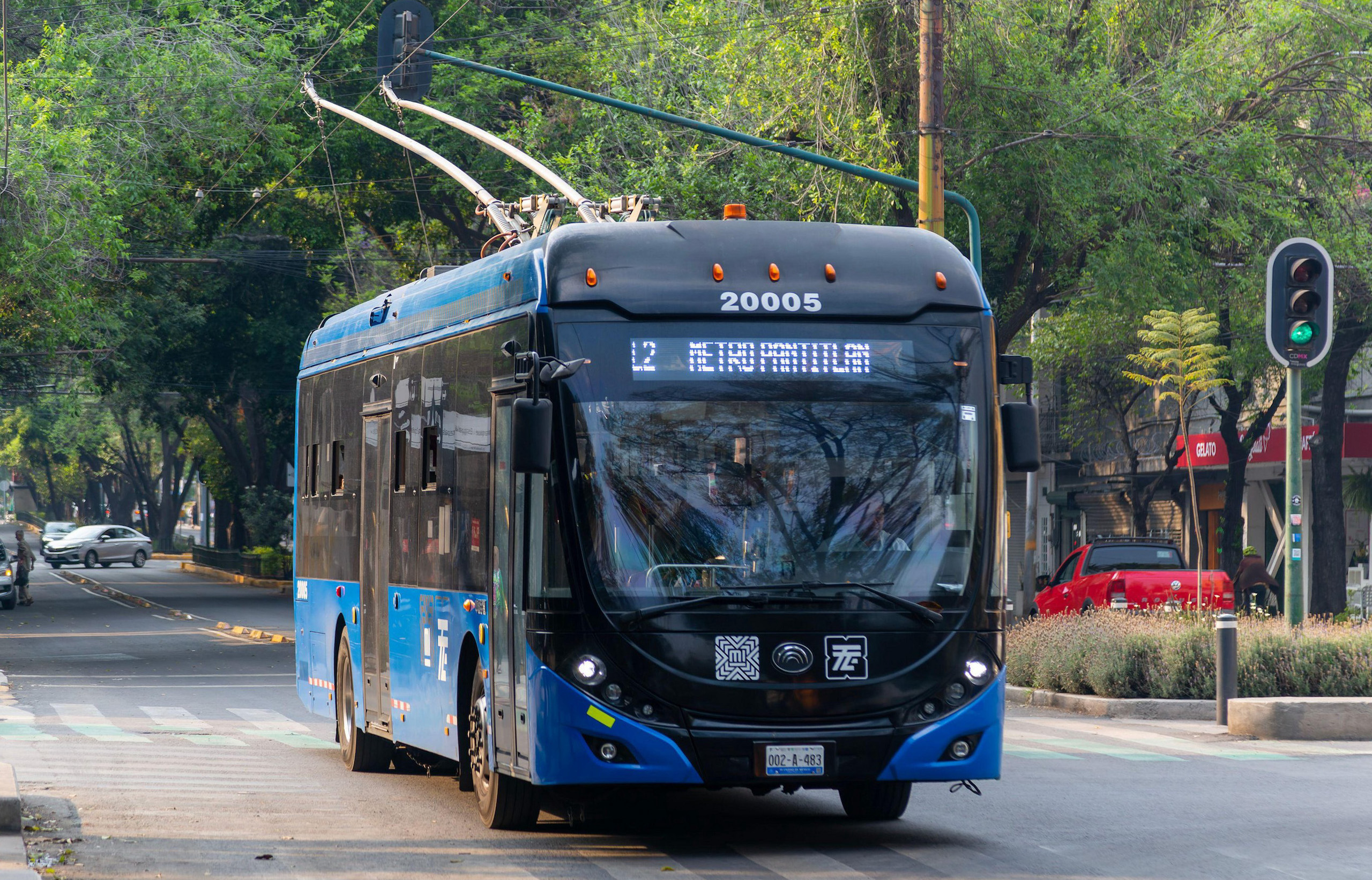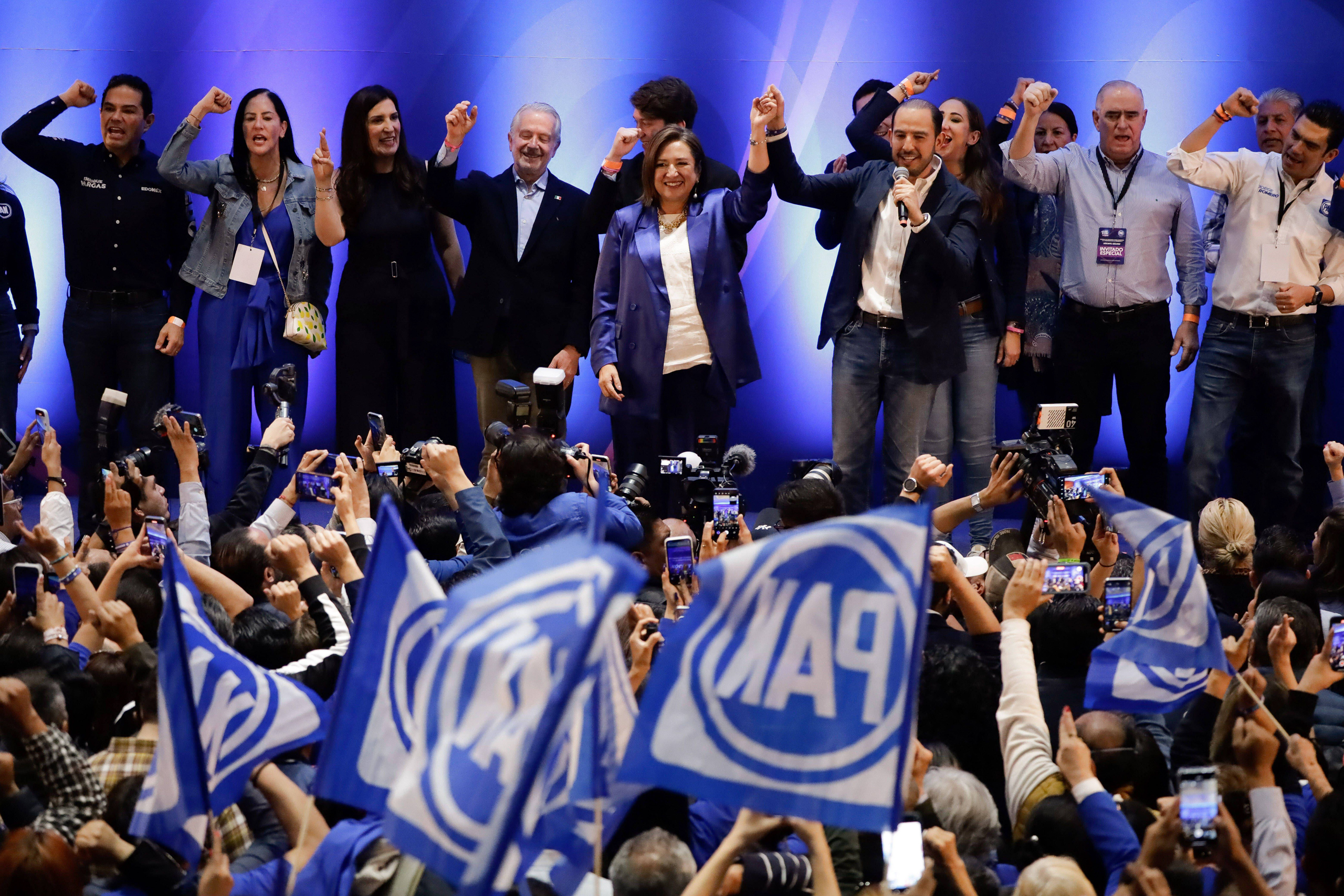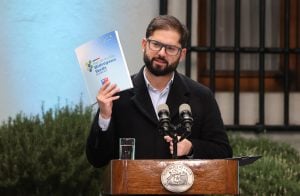As Mexico heads towards its presidential elections this Sunday, 2 June, the future of its energy transition is at stake. Leading candidate Claudia Sheinbaum and her closest competitor, Xóchitl Gálvez, have both acknowledged the oil-dependent country’s need for an energy transition, but are proposing different paths towards that goal.
Energy has been a hot topic during the six-year term of outgoing president Andrés Manuel López Obrador, widely known as AMLO, and also featured regularly in the candidates’ debates and speeches on the campaign trail. As election day nears, Dialogue Earth looks at their proposals on energy, and the key issues shaping the future of the sector in Mexico.
Claudia Sheinbaum: the energy contradiction
Claudia Sheinbaum, the former mayor of Mexico City, running as the candidate for AMLO’s left-wing Morena party, has maintained a substantial lead in the polls ever since confirming her candidacy last September. The most recent surveys of voters’ preferences and awareness of candidates indicate that she holds a considerable advantage over her opponents.
Sheinbaum is broadly offering continuity with the energy policies promoted by her predecessor, who has prioritised fossil fuels and the strengthening of the state-owned Federal Electricity Commission (CFE) and Petróleos Mexicanos (Pemex) in the name of energy sovereignty.
However, Sheinbaum – an environmental scientist and former contributor to the Intergovernmental Panel on Climate Change – has made stronger signals than AMLO for the need to promote Mexico’s gradual shift from fossil fuels towards cleaner energy sources such as wind and solar power. These include mentions of distributed generation, the smaller-scale energy production through renewable projects and clean technology in households and communities.
Improvements in energy efficiency are another key aspect of her proposed programme, including the promotion of investments in the country’s electrical transmission and distribution networks. During her time as Mexico City mayor (2018–2023), Sheinbaum won praise for her record on green initiatives, including overseeing the increasing electrification of the city’s buses, supporting the installation of solar panels in central markets, and attempting to curb plastic use.
“Our goal is to advance the energy transition at a faster pace,” Sheinbaum told a 6 May meeting of regional councillors from the Spanish private bank BBVA.
She has pledged USD 13.6 billion of investment in renewable energy to 2030, aiming to add more than 13 gigawatts of generation capacity to the grid. But this may still be insufficient to meet the country’s growing energy demands, with some business figures estimating that as much as USD 3 billion a year is needed to support the sector, and calling for increased foreign investment. A national electricity reform in 2013, by comparison, helped to add around 8 GW of new capacity by 2019, and the country has since announced intentions to more than double renewable generation capacity, in order to meet emissions reduction targets.
Sheinbaum’s 308-page manifesto cites “energy transition” 18 times.
But days after her appearance before the bank officials, some of the contradictions and political compromises of the poll-leader’s energy proposals were made clear. On 15 May, during a tour of the state of Nayarit, she mentioned a long-term plan for Pemex, which foresees “the exploitation of hydrocarbons and refining, processing, petrochemicals, and a vision where Pemex also enters into renewable energies and cogeneration.”
During her pre-political career as an academic, while she was a researcher in the institute of engineering at the National Autonomous University of Mexico (UNAM), Sheinbaum put forward a much more critical view of fossil fuels. In a 2008 essay on energy alternatives for Mexico, the now-candidate questioned the increase in oil exploitation as a sign of “irrational use of the resource” and expressed concerns over its “greater environmental impacts”.
Now, in the game of politics, Sheinbaum has been widely seen by analysts as moulding her discourse to follow the line of her mentor, AMLO, in privileging the role of Pemex and CFE and, by extension, favouring the consumption of fossil fuels. She has, however, signalled more openness than her predecessor to the participation of private companies in Mexico’s energy sector, including in meetings with international business groups.
Xochitl Gálvez: a return for the private sector
Sheinbaum’s closest opponent is Xóchitl Gálvez, a former senator, computer engineer and businesswoman, running as the nominee for the broad Strength and Heart for Mexico coalition. The focus of her energy proposals has been the reopening of the sector to private investment, returning to the conditions of the 2013 energy reform, which AMLO abandoned.
In this sense, she has proposed launching auctions for renewable energy projects, as well as the tendering of oil exploration blocks. In parallel, she has called for the closure of six loss-making Pemex refineries, and for the state company to participate in the generation of hydrogen and other energies with private firms.
The candidate’s coalition brings together the conservative National Action party, the centre-left Democratic Revolution, and the Institutional Revolutionary Party that dominated 20th-century Mexican politics. Some of her key energy proposals include a goal of achieving carbon neutrality by 2050, the promotion of electric public transport and the installation of home solar panels. She has also suggested the deployment of fossil gas in the south-east of the country, with the region facing challenges in meeting residential and industrial demand, as well as transmission.
Her proposal document contains 14 mentions of the energy transition.
“The world is not going to wait to see whether or not Mexico wants to enter the energy transition. We’d better get on this train,” Gálvez said during a tour of the state of Yucatán in March.
“There is no better sovereignty than not relying on fossil fuels, relying on wind, solar energy, but it is also clear to me that we have to make a just transition,” she said. “We cannot say overnight that fossil fuels will no longer be used, that is false, because oil is something very valuable,” she added.
AMLO focus on energy sovereignty
Looking at the energy policies pursued by the AMLO government since 2018 is key to understanding the current candidates’ proposals. His government has made energy sovereignty one of its flagship initiatives, aiming for the country to meet its needs through domestic production. Support for fossil fuels has been privileged under this approach, with the country’s energy transition stalling during his tenure.
78%
In 2023, 78% of Mexico’s electricity generation depended on fossil fuels, followed by wind and hydropower (both 5.9% each), solar (5.2%) and nuclear (3.4%).
Mexico will miss the target set in 2014 for clean sources to have a 35% share of generation by 2024; its target for 2035 is 40%.
Although government support has helped to stabilise Mexico’s oil extraction, it has not been the salvation that Pemex may have imagined: the USD 90 billion transferred during the AMLO government in various types of support, such as tax reductions and subsidies, have not resulted in better financial results for the struggling company.
Meanwhile, Mexico continues to rely on the United States for electricity generation and gas imports, burned in combined cycle power plants.
The Mexican government is also encumbered by the construction of the Olmeca refinery, better known as Dos Bocas, in the south-eastern state of Tabasco, some 760 kilometres from Mexico City. Construction began in 2019 and it was scheduled to begin operating in 2022, though the estimated cost has now jumped from an initial USD 8 billion to at least USD 17 billion.
Dos Bocas has been pitched by the AMLO government as the basis for fuel sovereignty, as it will theoretically refine some 340,000 barrels of crude per year, producing 170,000 barrels of gasoline and 120,000 barrels of diesel. Gálvez has described the troubled refinery as a “monument to corruption” and said she would pledge support and investments to finish the project.
Mexico among Latin America’s worst polluters
Another result of the AMLO government’s policies has been an increase in Pemex’s emissions. These grew from 48 million tonnes of carbon dioxide equivalent in 2019 to 60 million tonnes in 2023, according to Pemex reports sent to the Securities and Exchange Commission, the US stock market regulator, as a requirement for the company to sell bonds there.
The energy sector is the third largest source of methane emissions in the country, releasing 1.34 million tonnes into the atmosphere in 2023, to which Pemex is the largest contributor. However, several studies have highlighted that the true scale of this pollution could be higher, due to shortcomings in measuring processes.
As part of the Global Methane Pledge launched at the COP26 climate conference in 2021, Mexico has committed to reducing its emissions by 2030. Current policies put it on a path towards achieving only minor cuts in methane emissions, with the International Energy Agency projecting 1.2 million tonnes a year by 2030, and describing the country’s progress as “moderate”.
Mexico ranks as the second largest polluter in Latin America, after Brazil, and is among the 12 largest emitters of carbon dioxide (CO2) in the world. Pemex is among the 15 most polluting companies in the world.
These energy figures underline the urgency of the decisions facing the election candidates both at the national level, and in relation to the state-owned companies.
Ramón Torres, a UNAM researcher in energy and development studies, proposes that, for its own future, Pemex and CFE should support the development of offshore wind energy, battery storage, hydrogen generation, and the promotion of distributed generation and mass electrification.
The transition needs willpower: the goals have been there, they are ambitious, but it doesn’t happenAnaid Velasco, Mexico Resiliente
“For years, we exploited the cow, now let’s dedicate the cow to something else if it no longer works,” Torres says. “We have to enter the new energy world.” CFE and Pemex, he adds, should “turn to the new technological frontier. They should be the tools for the energy offer of the future.”
For environmental lawyer Anaid Velasco of Mexico Resiliente, a coalition of sustainability organisations, it will be necessary for the next president to set out clear rules for the country’s energy transition, without setting obstacles.
“The transition needs willpower,” she says. “The goals have been there, they are ambitious, but it doesn’t happen. In a presidential system, things happen if the incumbent wants them to happen. If there is a legal system that allows participation from various sectors, incentives can be put in place to make it happen. Transition happens at various scales, from panels in houses to the industrial level.”
Mexico’s presidential election takes place on 2 June. Claudia Sheinbaum continues to lead the race, polling at around 60% of voting intention, far ahead of Xóchitl Gálvez and centre-left candidate Jorge Álvarez Máynez, who are polling at roughly a third and a tenth of votes, respectively. The Morena candidate is widely expected to emerge as the winner.
